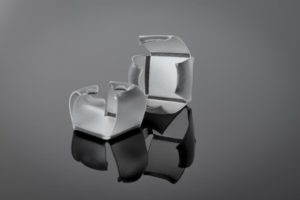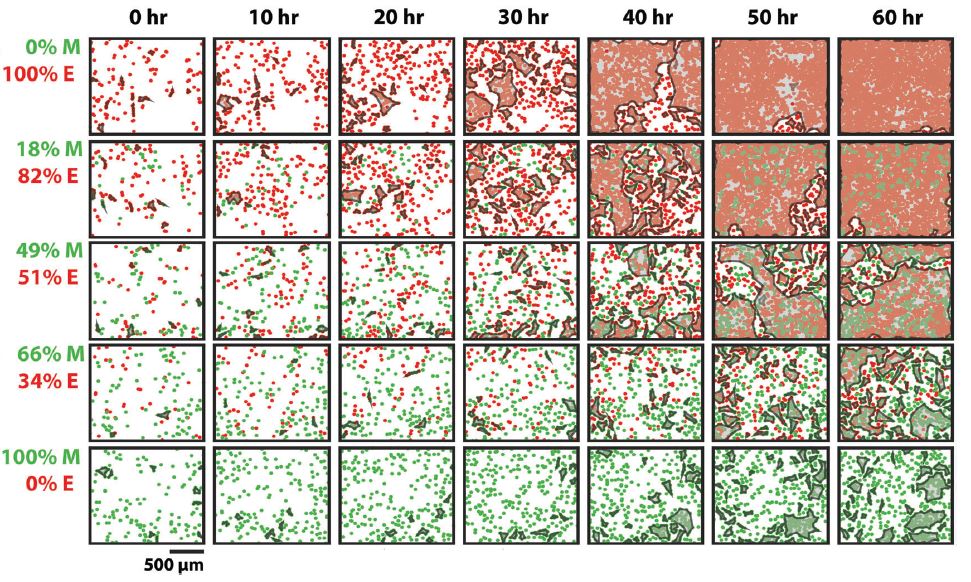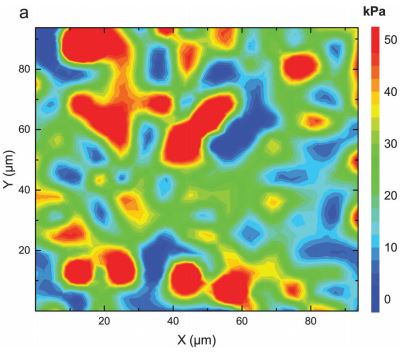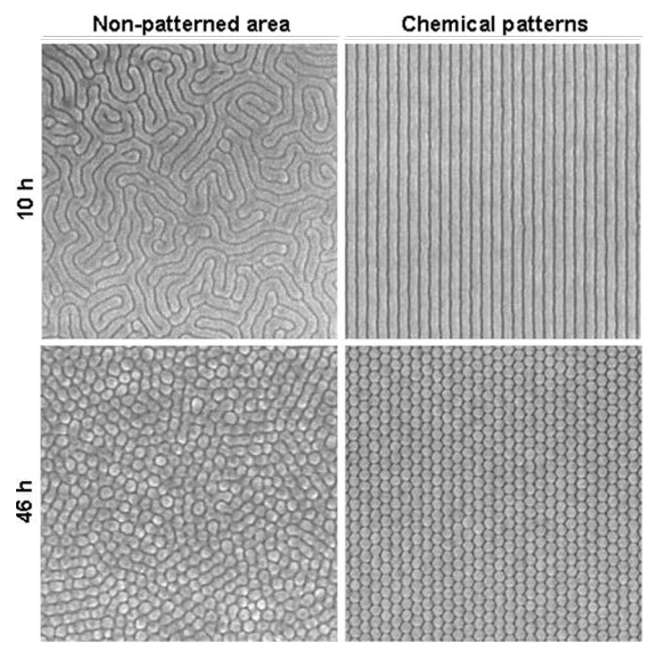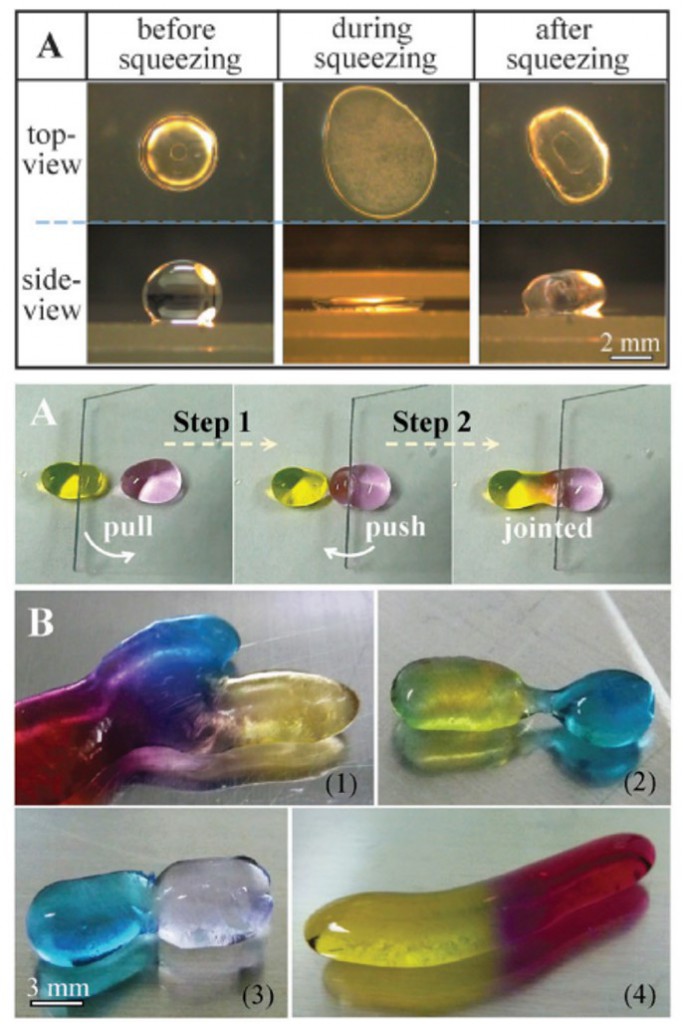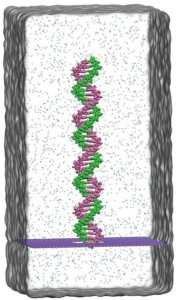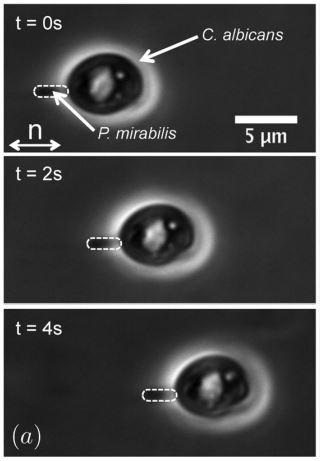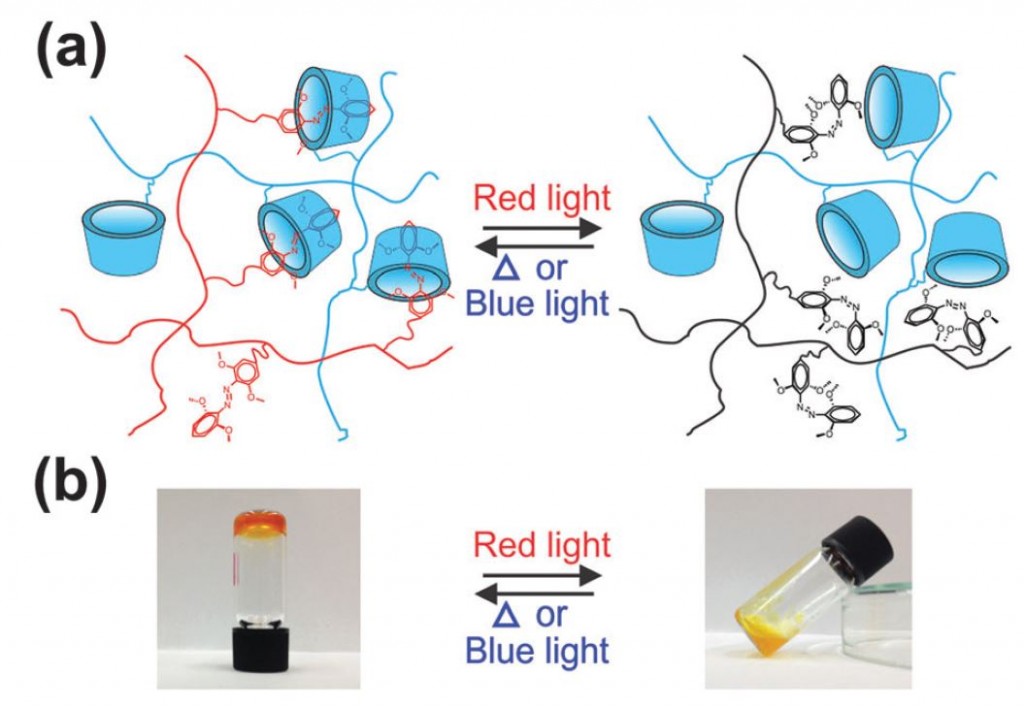Gallium-based liquid metals are a family of unique materials with remarkably low melting points (~15.5 ℃). They remain liquid at room temperature and can conform to their surrounding environment, making them an ideal candidates for producing soft machines. Soft machines can move forward and pass through barriers by ingeniously adapting their bodies to the surrounding environment. Therefore, soft machines have advantages over their rigid counterparts, for applications in confined space and on rough terrains.
To investigate the potential of liquid metal (eutectic gallium indium) for soft machine uses, researchers from Xi’an Jiaotong University, China described a magnetic scenario to effortlessly and precisely control the motion of liquid metal-based soft machines. The soft machine was powered by micro-scale magnetic beads embedded inside the liquid metal. When the magnetic field was on, the beads quickly responded to it, moved to the boundary of the liquid metal and dragged the liquid metal to move in any direction, as guided by the applied magnetic field. The moving speed of the soft liquid metal machine could be well modulated in a certain range. Interestingly, once the soft machine was no longer required, its movability was stopped by extracting the embedded “engine” (the magnetic beads) with a simple fast move of the magnet. In addition, the ability to perform in various environments (on a solid surface and in water) ensures this magnetic method can be a versatile way to steer liquid metal machines.
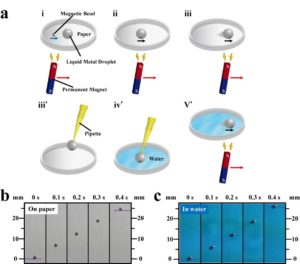
Figure 1. Magnetic steering of soft liquid metal machines. (a) Schematic illustration of the fabrication and motion of liquid metal machines. (b, c) Liquid metal machine locomotion for on paper (b) and in water (c) cases under magnetic control.
The liquid metal is unique in combining liquid-like fluidity and metal-like electrical conductivity, so soft machines based on liquid metal are quite promising for electronic applications. To uncover this potential, the group designed such liquid metal machines as elements for healing paper-based flexible electronics. In their experimental demonstrations, liquid metal machines were driven by a magnetic field to reconnect the open circuit of an AND-OR logic circuit by gluing the isolated electrodes together.
This research offers a novel route to control the steering motion of liquid metal mobiles and gearing soft machines with easy accessibility and direct control. This can inspire those working on magnetics to explore new application realms for magnetic actuation.
Magnetic steering of liquid metal mobiles Soft Matter, 2018, Advance Article. DOI: 10.1039/C8SM00056E
Read this article for FREE until 8 May
About the web writer
 Dr. Xingcai Zhang is a Harvard SEAS Fellow at Harvard University. He was a postdoc researcher at MIT/SYSU. His expertise includes chemistry, bionanomaterials, bionanomedicine, nanotea, natural products, carbon/polymer/natural/two-dimensional materials for biomed/catalysis/absoption/energy applications. Dr. Zhang serves as an Associate Editor for a Springer Nature journal and is on the Advisory Board of a Wiley cancer journal and an editor of a cancer journal. Some of Dr. Zhang`s publications can be found at: http://orcid.org/0000-0001-7114-1095 and he can be reached at xingcai@mit.edu and mylovetea@outlook.com
Dr. Xingcai Zhang is a Harvard SEAS Fellow at Harvard University. He was a postdoc researcher at MIT/SYSU. His expertise includes chemistry, bionanomaterials, bionanomedicine, nanotea, natural products, carbon/polymer/natural/two-dimensional materials for biomed/catalysis/absoption/energy applications. Dr. Zhang serves as an Associate Editor for a Springer Nature journal and is on the Advisory Board of a Wiley cancer journal and an editor of a cancer journal. Some of Dr. Zhang`s publications can be found at: http://orcid.org/0000-0001-7114-1095 and he can be reached at xingcai@mit.edu and mylovetea@outlook.com











